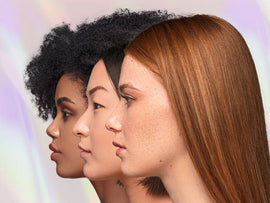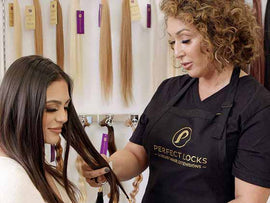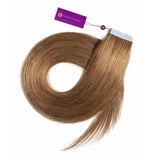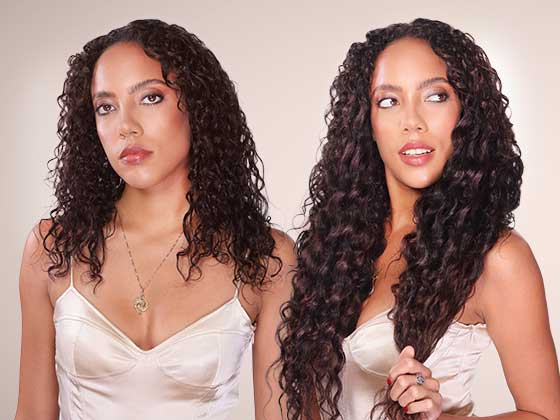Back on July 3, 2019 a major milestone was reached in the longstanding prejudice that black children and adults were subjected to from schools and workplaces. California became the first state to declare it illegal to discriminate based on the hair someone was born with. Dubbed the CROWN Act (Create A Respectful and Open Workplace for Natural Hair). New York state followed suit a week later and slowly, things are changing.
When it comes to black hair history, the roots go quite deep and are a half a millennia story wrapped up in pride, heritage, prejudice and at last validation. We rounded up 12 Essential Facts about Black Hair History you need to know to take pride in your texture!
1: Before the slave trade, your hairstyle was a sacred symbol in Africa told someone everything about you!
In pre-colonial Africa in the 15th century your hairstyle was an intricate part of your identity in more ways than one. Symbolic cornrows first began to appear as far back as 3000 B.C., followed by bantu knots that became popular amongst bantu tribes in South Africa.

Each family and each tribe had a distinctive style all their own, with each plait, row or upswept curve telling anyone who looks your way whether you were royalty or commoner, soldier or an expecting mother. Whether you were male or female, the more intricate the style, the higher place you held in society. African women also would shave their heads as a sign of mourning of a loved one. Then colonialism began, as did the sad history of slavery and the start of centuries of hair discrimination.

2: Conquered and crushed, Eurocentric standards of beauty suppressed identity and eradicated ancient hairstyle culture for centuries.

As Europe expanded and began to colonize, the year 1441 marked the first example in history of Africans taken against their when Portuguese traders captured 12 Africans in Cabo Branco and brought them back to Portugal as slaves. Brought west through the “Middle Passage”, their identity was stripped from them en route, with hair being shaved off as they were forced to conform to “civilized” European ideal of beauty. Documented cases of describing African hair offensively as “wool” served to further dehumanize and begin countless generations of shame over the texture they were born with. Further, slaves who happened to have lighter skin or softer hair were valued more than those with darker skin and coarser hair, creating discrimination and shame within black culture and even family units. By 1619, African language and the language of hairstyles began to disappear, as slaves chose to or were forced to adapt to a new standard of beauty.
3: The black hairstyles of Louisiana were once deemed “distracting”, and outlawed by the Governor of New Orleans.

Throughout New Orleans and Louisiana in the 1700s, black women began to regain and adopt some of the elaborate hairstyles worn by their ancestors. In order to diminish “excessive attention to dress” among women of color, Spanish colonial Governor Don Estevan Miro enacted the Tignon Laws in 1786 that “…prohibited Creole women of color from displaying ‘excessive attention to dress’ in the streets of New Orleans”. Creole women of color were required to wear a tignon (scarf or handkerchief) to cover their hair as a way to indicate that they belonged to the slave class despite the fact that some of these women were “free slaves”. Those women affected by the law did, in fact, cover their hair, but they boldly did it with elaborate fabrics and jewels- an action which technically meant the letter of the law but also allowed them to maintain their standards of fashion and beauty. They effectively re-interpreted the law without technically breaking the law.
4: Before Madam C.J. Walker, there was Annie Turnbo Malone, the first black woman of business who helped women everywhere.

Chances are you’ve heard of Madam C.J. Walker, but long before her was an orphan born into slavery named Annie Malone. Born in 1869, growing up Malone had an idea that helping black women feel empowered in grooming and have products to improve their hair could improve their class and social standing. Starting her career at a young age styling her sisters’ hair, she began studying chemistry on her own and managed to establish a successful business developing her own haircare products. Designed to “improve scalp health and promote hair growth”, she launched a series of scalp tonics and her famous, “Hair Grower”. By 1902 she moved herself and her business from Illinois to Missouri where she founded the Poro College Company.

Poro College was more than JUST a college to teach women how to style black hair, but also served as stable first time employment for many black women who became Poro Agents. In total tens of thousands of women around the world owed their life changing income and careers to Annie Turnbo Malone and Poro at a time when gainful employment for women much less black women was hard to come by. Amongst her Poro Agents was another kindred spirit, also orphan to formerly enslaved parents, a young woman named C.J. Walker.
5: Madam C.J. Walker broke through the glass ceiling, becoming one of the most successful black women in beauty of all time.
At a young age C.J. Walker was a victim of a scalp disease that resulted in the loss of most of her hair. In a desperate search for answers, she enrolled at Annie Malone’s Poro College. Quickly becoming a fast selling agent, she also was inspired to begin making products of her own. Moving to Denver, Colorado, she changed her name to “Madam” C.J. Walker and oddly enough formulated her first hair growing tonic based on a dream she had.

She achieved rapid success with product after product that she developed that met the needs of black women. By 1908, she relocated to Pittsburgh, Pennsylvania, opening a factory and a hair school of her own called Lelia College. Here, young women were taught to be “hair culturists”, learning hairdressing technique that included hair straightening services, scalp and haircare treatments. Madam C.J. Walker would become America’s first recognized self-made female millionaire, shattering a ceiling that long couldn’t have been imagined by her enslaved parents and ancestors.

The solutions created by Madam C.J. Walker and Annie Turnbo Malone however still served to meet the beauty ideal that had been set by European colonizers and slave owners centuries before. Texture hair was still softened, broken, straightened and smooth and special creams that today would be labeled carcinogenic were applied to the face and hands to lighten the skin. It would taken another half a century before things would start to change.
6: The 1960’s Civil Rights movement in the United States changed everything.
By the 1960’s oppression and discrimination of blacks far beyond rights, identity and hair reached a fever pitch. Natural and traditional hairstyles worn by their ancestors re-emerged into a modern era as symbols of liberation and pride of self. Civil Rights activists like Angela Davis with her mile high afro started to redefine and reclaim long lost cultural feelings related to hair. The “Black Power Movement” and a return to traditional hairstyles saw many women look at hair straightening as a reflection of forced assimilation.
7: The wider popularity of the Afro began with blaxploitation films and an iconic actress named Pamela Suzette Grier.
On May 26th, 1949, Pamela Suzette Grier was born in North Carolina, a “military brat” moving to South West England in 1956 when she was young and back again two years later. While in high school she took an interest in theater and beauty contests before eventually moving to L.A. in 1967. Her start in Hollywood began merely as a switchboard operator for American International Pictures, but before long director Jack Hill spotted her, struck her big, bold and beautiful afro and larger than life presence. Her first big break would come from iconic filmmaker Roger Corman who cast her in the 1971 film, “The Big Doll House”. Her iconic hair and bold personality on film made her the face of “blaxploitation” cinema films, later being credited by Quentin Taratino as cinema’s “first female action star”. Arguably camp by today’s film standards, this era of film for the first time presented woman who were bold, strong and tough, a symbol of empowerment.
Roger Ebert praised the film for its believable female lead. He noted that Grier was an actress of "beautiful face and astonishing form" and that she possessed a kind of "physical life" missing from many other attractive actresses.
8: Everyone in the 1980s was obsessed with the Jheri Curl!

As The Disco Era ended and The Age of Excess began, the 1980s saw the rise of hip-hop music and culture paired with European influences of creative expression in color, fashion and hair. With women and even men embracing curls, kinks and waves like never before, a hairstyle that would define the era would be created by hairdresser Jheri Redding. The look was hilariously presented in the Eddie Murphy film, “Coming to America”.
The Jheri curl was a permanent wave style that created a loosely curled, high-shine look that was really easy to care for. Music icon Michael Jackson was the first artist to popularize the look on the cover of his 1982 Thriller album. Other notable musicians of the era included, Prince, Ice Cube, Rick James and Eazy-E.

We’ve come a long way in 500 years, losing identity and growing to generationally hate the hair we were born with. However, slowly and steadily, things are changing. Your hair, your beautiful texture and every ringlet has a long history to embrace.



















